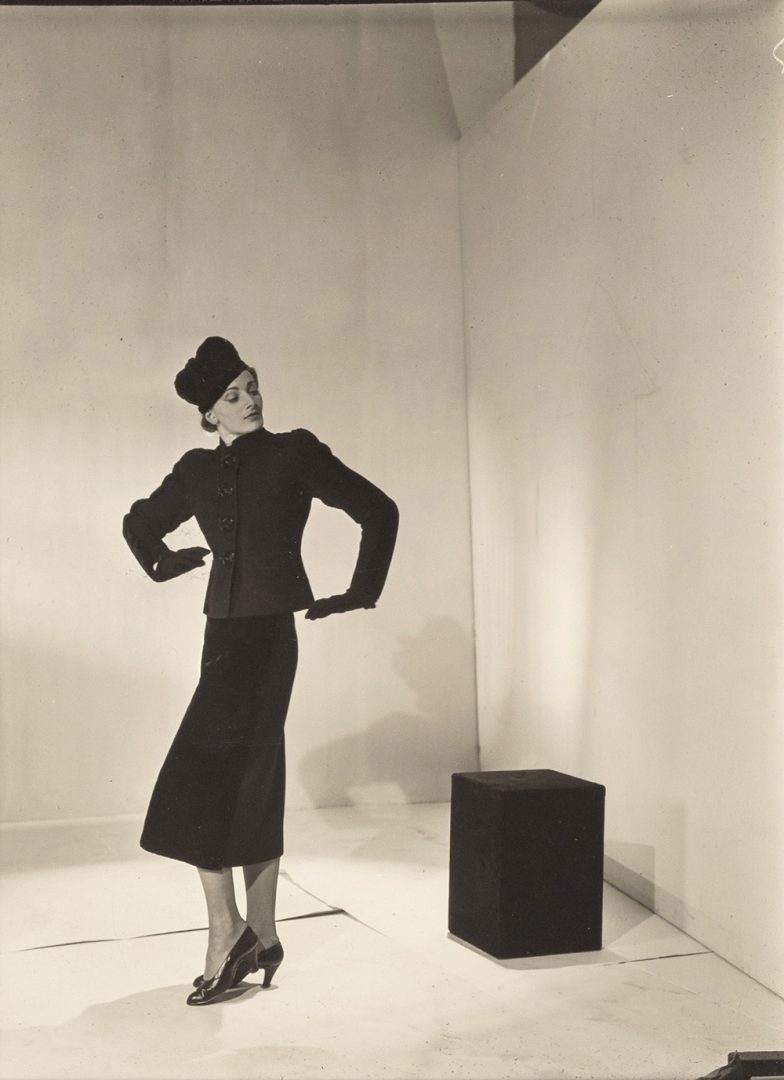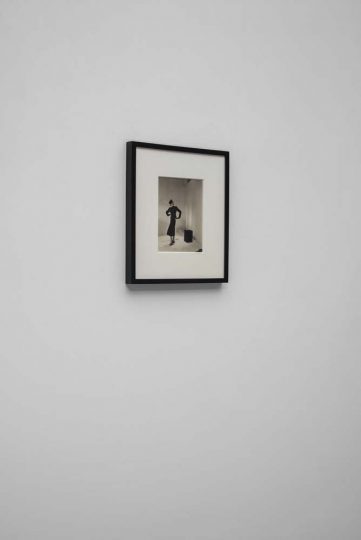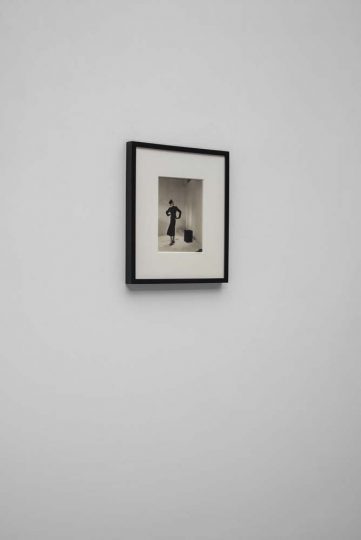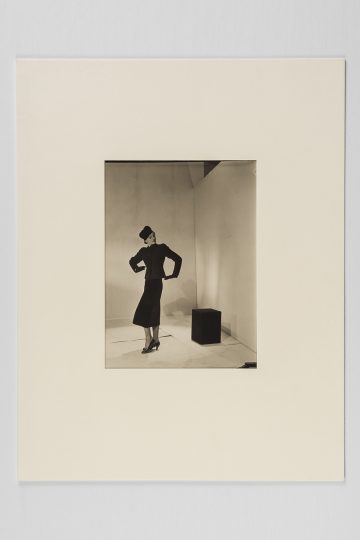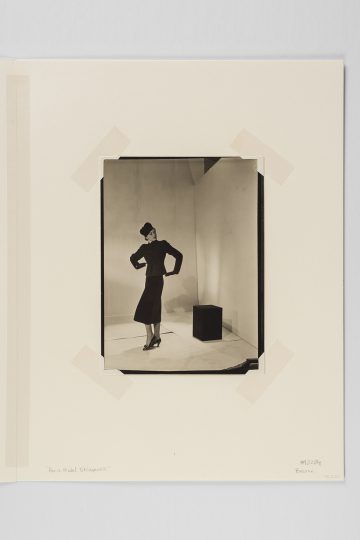Schiaparelli Model, Paris, c.1936
Cecil Beaton
Inscribed 'Paris model' and 'Schiaparelli' in unknown hand and stamped with photographer's and Sotheby's Cecil Beaton studio ink stamps on reverse
Silver gelatin print
9 1/4 x 7 inches
Provenance: the collection of Paul F. Walter
£8,500

Cecil Beaton began working for Condé Nast publications in 1927, quickly becoming a frequent contributor to the pages of Vogue and Vanity Fair. This photograph is likely from a shoot that Beaton did in 1936 for the French edition of Vogue. The model wears clothes by the Italian fashion designer, Elsa Schiaparelli. In 1936, Schiaparelli’s couture house, based at the fashionable address of Place de Vendôme in Paris, was one of the most celebrated of the era.
Renowned for her inventiveness of design, Schiaparelli was arguably the most avant-garde designer of the first half of the twentieth century. Among her accolades are the invention of the colour shocking pink and the mad cap, the first use of camouflage print in casual dress and the creation of the tuxedo dress. Particularly inspired by Surrealism and its innovative playfulness, Schiaparelli frequently collaborated with artists to create her products, for example, a perfume bottle devised by Leonor Fini and a compact designed in the shape of a telephone dial by Salvador Dalí.
Indeed, other images from the shoot from which this photograph is taken, included set pieces made by Dalí. Pictured in a simple black suit, the model wears a hat of an unusual shape. Schiaparelli’s design embellishes and exaggerates the popular turban style hats of the 1930s. Adopting a playful pose the model emphasises the form and sleek lines of the suit to create a dynamic and expressive image, unusual for fashion photography at the time.

